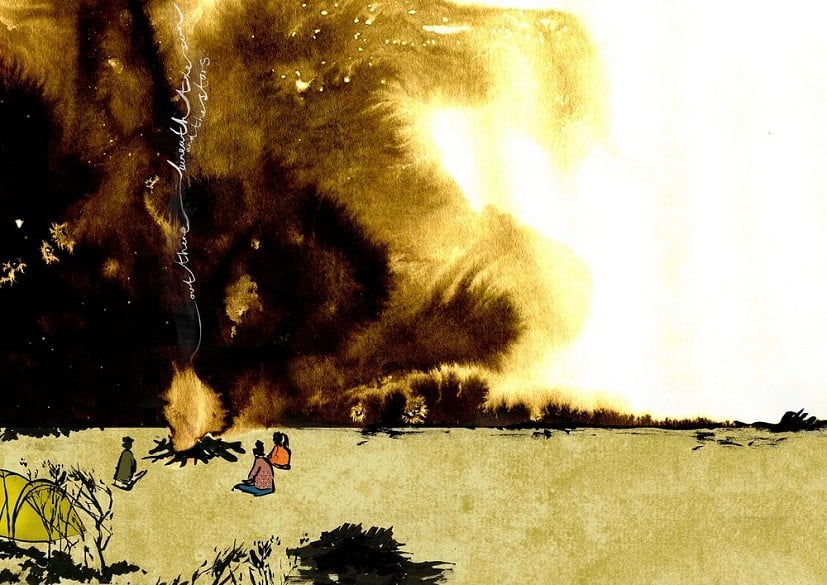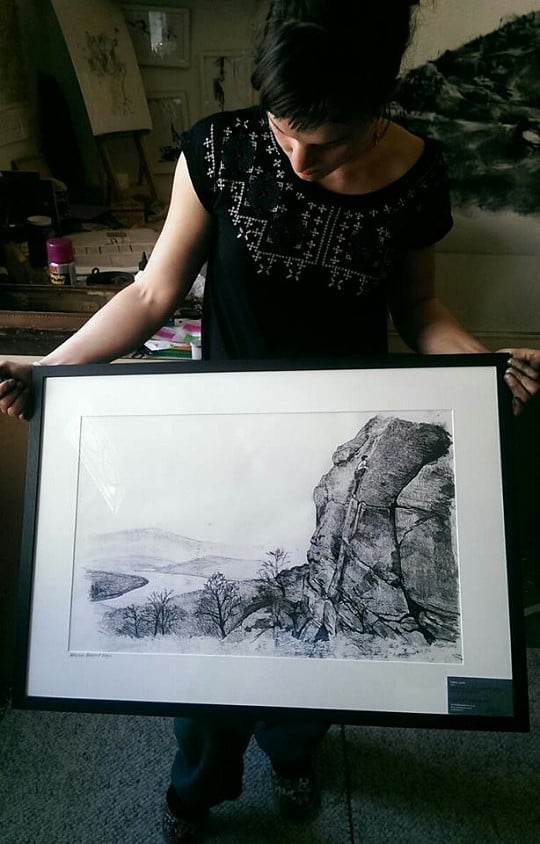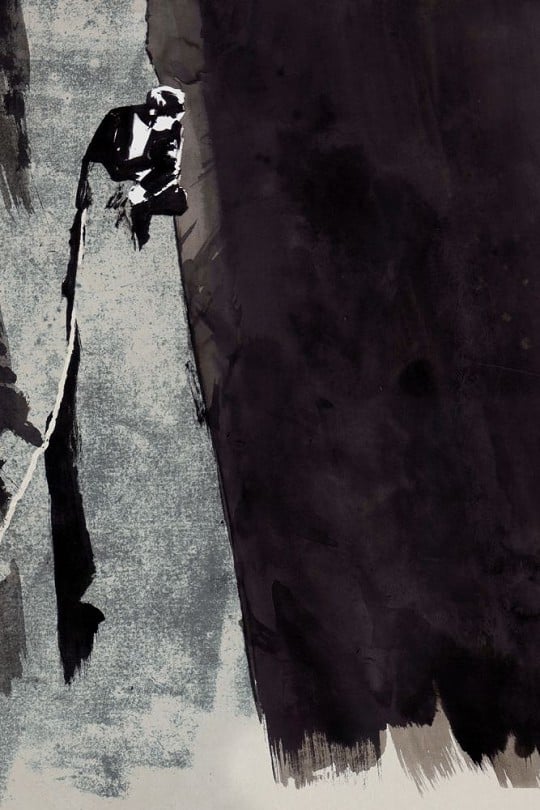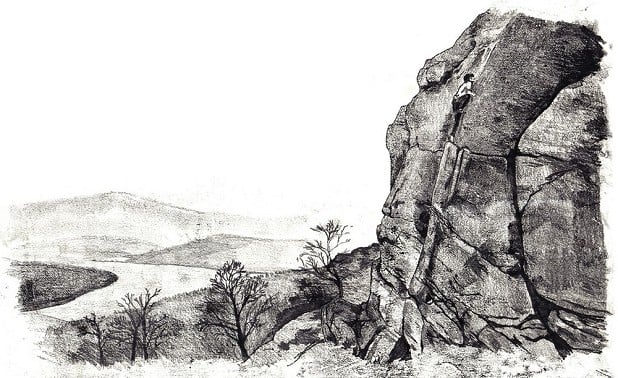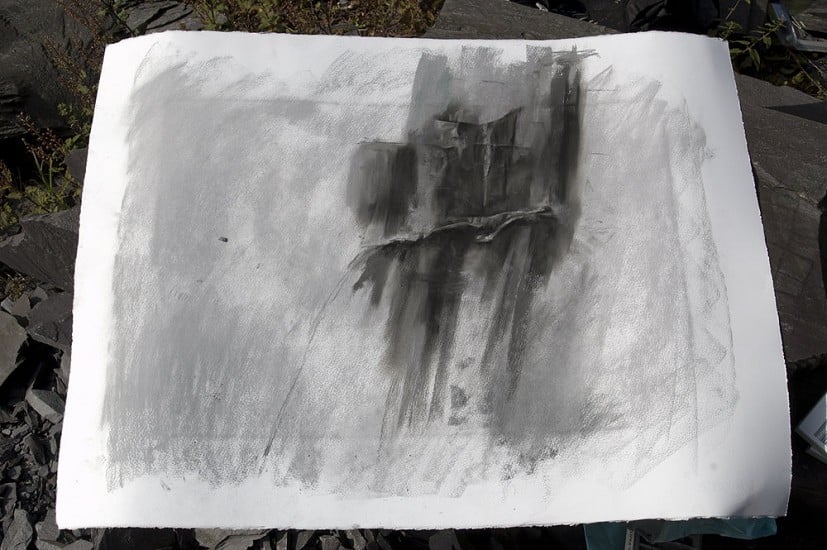Tessa Lyons is 27 and based in Sheffield. She is an artist and climber with a special interest in mountainous landscapes, whose artwork has been featured nationwide in a variety of exhibitions. You may recognise her climbing-inspired drawings from regular inclusion in the BMC's Summit Magazine or in promotional material for outdoor events such as the Kendal Mountain Festival.
I asked Tessa some questions to find out what inspires her stunning work and how she combines her passion for climbing and art.
"As an artist and a climber I am interested in the visual appeal of geology. Why it is that alpinists are drawn to certain mountains or why rock climbers describe certain routes or lines in rock as beautiful. As a climber I want to experience these places but as an artist I want to capture the essence of them."
Which did you discover first - climbing or art?
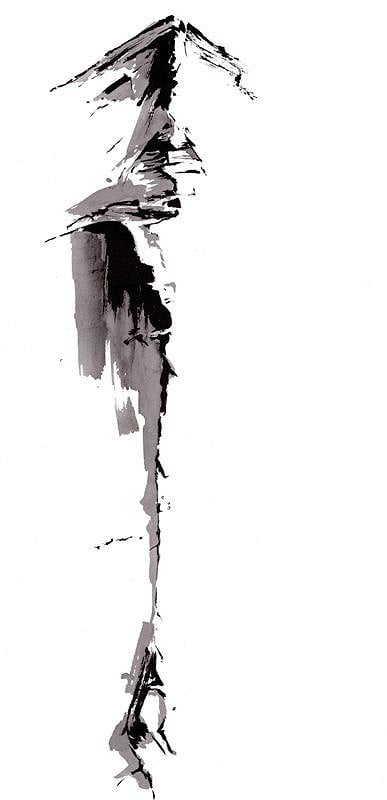
Hard to say which one I discovered first, I was introduced to both at a young age and both have developed in different ways for me. I suppose art has always been more of a focal point, something I’ve chosen to study and pursue as a career, whilst climbing has always been there and it has been something that I have kept coming back to, like a really good friend, climbing has always felt very familiar and comforting even though there were some periods where I didn’t do it so much.
I feel like I’m at a point at the moment where both my climbing and my art are taking on new forms. I’m trying harder climbs and branching out into trad, it has been really interesting and I feel like I am learning more about the psychological side of climbing as well as just enjoying the movement. It has been teaching me a lot about focus and confronting fear, I haven’t managed to master either of these things yet but it’s a work in progress!
Similarly with art, I have recently stepped into full time self-employment, which has been pretty scary but ultimately has proven very rewarding in terms of job satisfaction if not money. I do occasionally have times when the precarious nature of making a living from art feels incredibly daunting but I really believe you have to commit to stuff and just give it a go otherwise you’ll never know what could have been.
You have mentioned a correlation between climbing and drawing - can you explain what you mean by this?
You know how occasionally in climbing you can reach a state of heightened awareness when you become centered in that moment; you’re aware of subtleties in the formation of the rock under your skin, your body is engaged in the flow of movement and your mind is right there, present with you. I have found a certain correlation between the mental concentration and calmness I sometimes experience during climbing with the process of being absorbed in a drawing. I’m interested in learning a lot more about this state of mind and exploring it within both practices.
Was there a particular moment when you saw a link between the two, or did it just happen naturally?
Not sure there was a definitive moment but maybe when I started drawing particular lines in rock, like London Wall and Masters Edge at Millstone, I was looking for prominent lines to draw and I started to think about how you do the same in climbing, seeking out what you want to climb, then I suppose I started to see more parallels in the two experiences.
You state that you are interested in how landscapes can shape us as people - in what ways do you see the environment shaping us?
I think the environment can shape us in a few different ways, the landscapes that we inhabit shape our lives and therefore us. For our ancestors their surrounding environment provided all the essential materials and food they needed for survival. Obviously in our days we are a lot more disconnected from the natural environment, we don’t have to hunt for our food and we can survive easily off food from Lidl without knowing anything about the ecology of our surrounding landscape. Perhaps this is one of the appealing elements of sports like climbing, it gives us the opportunity to once again feel connected to the landscape.
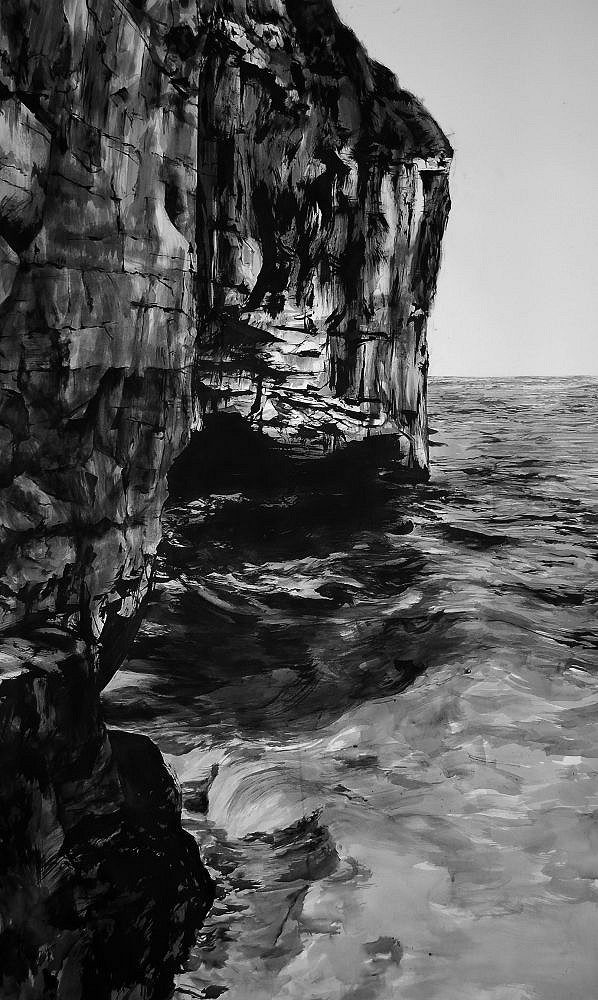
For example, my boyfriend Ben is very drawn to alpine climbing. Naturally I have spent a lot of time being worried about his safety in the mountains but I have also spent a lot of time contemplating why it is that he is drawn to these places, to have these experiences. After an expedition he spends a lot of time processing the trip, writing about it, unpicking it, like he is trying to see his own reason for doing it. It seems to me that in that process he is learning a lot about himself, by going to these unforgiving mountain environments I would imagine that kind of suffering would confront you with yourself and that in turn changes a person.
What do you look for when choosing a landscape or crag to draw?
It has to move me in some way and leave an impression on me. I feel like half the battle of doing a good drawing is choosing what you’ll be drawing. I guess it's kind of similar in climbing too, by picking a line that inspires you, you’ll probably climb better than if you picked an average looking line.
Do you draw at the crag, from a photo or from memory? How do you prefer to work?
Initially when I first started drawing landscapes I was working on a large scale, drawings averaging a couple of metres wide. For practical reasons I work from photos for drawings of this scale. Since moving to Sheffield I started wanting to draw from life, with the Peak right there it would be rude not to. So this caused for a change in scale, I started doing these long panoramic ink drawings of the Gritstone edges, inspired by Japanese calligraphy I hoped to try and capture the essence of the place with minimal marks.
Which materials do you use for your work?
I like working in black and white a lot, I often work with ink, sometimes charcoal. I’ve started doing a series drawing on old maps, which give an interesting base to work with.
For illustrations I often scan in my drawings and do a kind of digital collage adding colour and texture as I go. I also enjoy having a go at more hands on traditional printmaking techniques; etching, screenprinting, monoprinting, things like that.
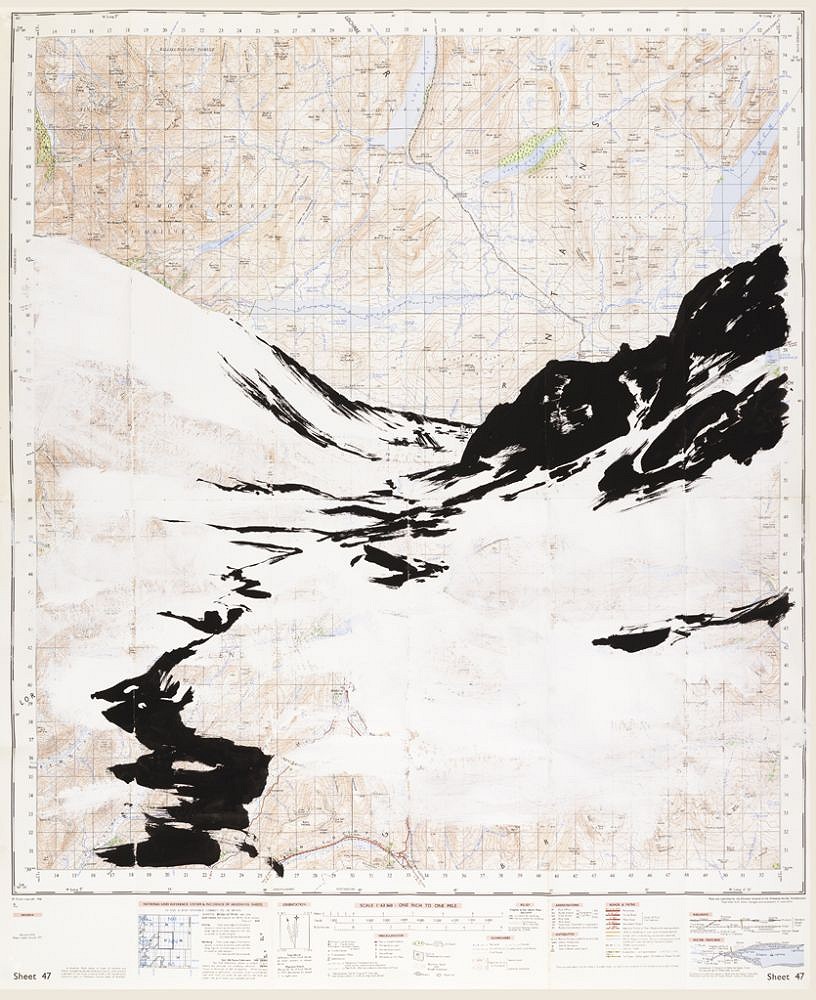
Which piece of work are you most proud of, and why?
That’s a hard one. Maybe my final piece at University, I had just started focussing on landscapes as a subject and felt like something had clicked in bringing two things in my life together. I suppose this also answers an earlier question about when I first found a correlation between climbing and drawing, it wasn’t exactly then, but it was at the end of University that the two started to become intertwined.
What are you working on at the moment?
Recently I have spent a bit of time pootling about in my van in North Wales, mostly in the slate quarries, I love the colours and contours of the rock and the weird apocalyptic atmosphere. I’ve started on a largeish charcoal drawing of Rainbow Slab, which I’m in the process of doing at the moment.
I’ve just finished a project working with a local hero of mine Neil Woodall. He is a master of printmaking and I have had the opportunity to pick his brains over the past few of months whilst working on a series of prints inspired by our beloved Gritstone edges.
If you had to choose just one landscape to draw which you haven't yet been able to, what would it be?
Japan! I am hoping to go to Japan next year with my pal and creative partner Claire Carter. Claire’s creative writing is concerned with a lot of similar themes to that of my drawing and artwork, we want to collaborate on a project responding to our experiences within the Japanese landscape. In the process of organising this still, but fingers crossed!
For more examples of Tessa's work and to buy prints, visit her website, Facebook Page or follow her on Twitter (@TessaLyons4)
- SKILLS: Top Tips for Learning to Sport Climb Outdoors 22 Apr
- INTERVIEW: Albert Ok - The Speed Climbing Coach with a Global Athlete Team 17 Apr
- SKILLS: Top 10 Tips for Making the Move from Indoor to Outdoor Bouldering 24 Jan
- ARTICLE: International Mountain Day 2023 - Mountains & Climate Science at COP28 11 Dec, 2023
- ARTICLE: Did Downclimbing Apes help Evolve our Ultra-Mobile Human Arms? 5 Dec, 2023
- ARTICLE: Dàna - Scotland's Wild Places: Scottish Climbing on the BBC 10 Nov, 2023
- INTERVIEW: Loki's Mischief: Leo Houlding on his Return to Mount Asgard 23 Oct, 2023
- INTERVIEW: BMC CEO Paul Davies on GB Climbing 24 Aug, 2023
- ARTICLE: Paris 2024 Olympic Games: Sport Climbing Qualification and Scoring Explainer 26 Jul, 2023
- INTERVIEW: Malcolm Bass on Life after Stroke 8 Jun, 2023



